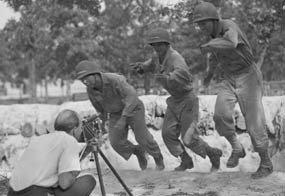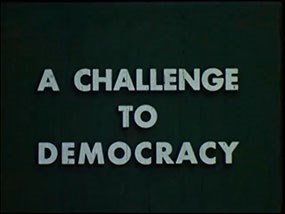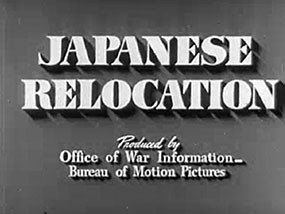Films and Shows about the Tule Lake Segregation Center
Life at Tule Lake
Jimi Yamaichi takes us on tours of the camp grounds in Newell, CA and a barracks replica at the Japanese American Museum in San Jose, CA. The film includes scenes from the 2002, 2004, 2006, and 2008 Tule Lake Pilgrimages. You will also see an interview with Hiroshi Kashiwagi, as well as his poem a "Visit to Tule Lake".
Edited by Anders Tomlinson. Music by SonicAtomics. Produced by Anders Tomlinson and Jimi Yamaichi.
Charles Palmerlee Collection (96.47.8)
Color footage shot at Tule Lake by teacher Charles Palmerlee, 1942-1945. Includes panning shots of camp barracks; the guard tower at sunset; high school students, including a graduation; school administrators and office staff; Japanese dance performances; crafts, including bird and shell pins; the Tule Lake Union Church; Christian Youth Fellowship group; shots of families and children; the transition to segregation camp with families leaving and others arriving; and hand-made intertitle cards.
Credits: Charles Palmerlee Collection, Gift of Mrs. Charles Seward Palmerlee, Japanese American National Museum (96.47.8). Preserved and made accessible in part by a grant from the National Film Preservation Foundation.
Resistance at Tule Lake
This film tells the long-suppressed story of incarcerated Japanese Americans who defied the government by refusing to swear unconditional loyalty to the U.S. Though this was an act of protest and family survival, they were branded as “disloyals” by the government and packed into the newly designated Tule Lake Segregation Center.
Cats of Mirikatani
Eighty-year-old Jimmy Mirikitani survived the trauma of WWII internment camps, Hiroshima, and homelessness by creating art. This documentary explores the lingering wounds of war and the healing powers of friendship and art.
From a Silk Cocoon
The discovery of a small metal box leads to the uncovering of a family story, shrouded in silence for more than 60 years.
History Dectives
George T. Tamura is a Japanese American artist. Born in Sacramento, CA in 1927, he attended Chouinard Art Institute and showed in numerous one-man shows in the Los Angeles area. He was employed as an award-winning art/creative director. Mr. Tamura was featured on the PBS program History Detectives as host Tukufu Zuberi investigated and solved the mystery of who created the paintings of an apparent internment camp discovered in an unlabeled box.



